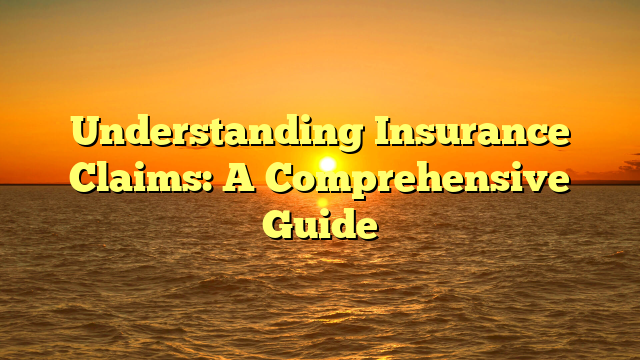Car insurance is a crucial financial protection for vehicle owners, providing coverage for accidents, damages, and liabilities. Understanding the intricacies of car insurance policies is essential to ensure you have adequate coverage and make informed decisions.
This guide will walk you through the essentials of car insurance policies, helping you navigate the complexities and choose the best policy for your needs.
What is a Car Insurance Policy?
A car insurance policy is a contract between the policyholder and an insurance company that provides financial protection in the event of car accidents, damages, or liabilities.
It serves to safeguard the policyholder from financial losses resulting from accidents, theft, or other covered events.
Legal Requirements
Most states require drivers to carry a minimum level of liability insurance to legally operate a vehicle. The specific minimum requirements vary by state, so it’s essential to understand the requirements in your location to ensure compliance.
Types of Car Insurance Policies
Liability Coverage:
Liability coverage is the foundation of most car insurance policies. It covers damages and injuries to others in accidents where you are at fault. Liability coverage consists of two main components:
- Bodily Injury Liability
Bodily injury liability coverage pays for medical expenses, pain and suffering, and lost wages for individuals injured in an accident caused by the insured driver.
- Property Damage Liability
Property damage liability coverage compensates for damages to other people’s property, such as vehicles, buildings, or infrastructure, caused by the insured driver.
- Collision Coverage
Collision coverage protects your vehicle against damages resulting from collisions with other vehicles or objects, regardless of fault. It covers the cost of repairs or provides the actual cash value (ACV) if the vehicle is deemed a total loss.
- Comprehensive Coverage
Comprehensive coverage provides protection for damages to your vehicle caused by non-collision events, such as theft, vandalism, fire, hail, falling objects, or natural disasters. It also includes coverage for broken windshields.
- Personal Injury Protection (PIP)
Personal injury protection, also known as no-fault insurance, covers medical expenses, lost wages, and other related costs for you and your passengers, regardless of fault. PIP coverage varies by state and may include additional benefits such as funeral expenses and rehabilitation costs.
- Uninsured/Underinsured Motorist Coverage
Uninsured/underinsured motorist coverage protects you if you are involved in an accident with a driver who doesn’t have insurance or has insufficient coverage. It helps cover medical expenses, lost wages, and other damages caused by an uninsured or underinsured driver.
Factors Affecting Car Insurance Premiums
Vehicle Factors
Several vehicle-related factors can influence car insurance premiums:
- Make, Model, and Year:
The make, model, and year of your vehicle affect insurance rates. Expensive or high-performance vehicles typically have higher premiums due to increased repair costs or greater risk of theft.
- Safety Features and Anti-Theft Devices:
Vehicles equipped with safety features such as anti-lock brakes (ABS), airbags, rear-view cameras, and anti-theft devices may qualify for discounts on insurance premiums.
- Repair Costs and Vulnerability:
The cost of repairs for your vehicle and its vulnerability to damage or theft can impact insurance premiums. Vehicles with higher repair costs or those more prone to theft may have higher premiums.
Driver Factors
Various driver-related factors also influence car insurance premiums:
- Age and Driving Experience:
Younger, inexperienced drivers typically face higher insurance rates due to a higher likelihood of accidents. As drivers gain more experience and reach middle age, premiums may decrease.
- Driving Record and Claims History:
A clean driving record with no accidents or traffic violations can lead to lower insurance premiums. On the other hand, multiple accidents or violations may result in higher rates.
- Credit Score
In some states, insurance companies consider credit scores when determining premiums. Maintaining a good credit score can help you secure lower insurance rates.
Coverage Options
The types and levels of coverage you choose affect your insurance premiums. Opting for higher coverage limits or additional coverage options will generally increase your premiums.
Deductibles
A deductible is the amount you must pay out of pocket before your insurance coverage kicks in. Higher deductibles typically result in lower premiums, but you should choose a deductible that you can comfortably afford in case of an accident.
Understanding Coverage Limits
- Bodily Injury Liability Limits
Bodily injury liability limits represent the maximum amount your insurance company will pay for injuries sustained by others in an accident you cause.
These limits are typically expressed as two numbers, such as $50,000/$100,000, where the first number is the limit per person and the second number is the limit per accident.
- Property Damage Liability Limits
Property damage liability limits indicate the maximum amount your insurance company will pay for damages to other people’s property caused by you in an accident. For example, if your limit is $50,000, your insurance will cover up to that amount for property damage.
- Uninsured/Underinsured Motorist Coverage Limits
Uninsured/underinsured motorist coverage limits determine the maximum amount your insurance will pay for injuries or damages caused by an uninsured or underinsured driver. These limits work similarly to bodily injury liability limits.
- Comprehensive and Collision Coverage Limits
Comprehensive and collision coverage are subject to deductibles rather than specific limits. The deductible amount is subtracted from the claim payout. For example, if your vehicle sustains $5,000 in damages, and your deductible is $1,000, your insurance will cover the remaining $4,000.
Filing a Car Insurance Claim
- Reporting the Accident
After an accident, it’s crucial to report the incident to your insurance company promptly. Provide accurate and detailed information about the accident, including the date, time, location, and involved parties.
- Documenting the Incident
Gather as much evidence as possible to support your claim. Take photos of the accident scene, damage to vehicles, and any injuries sustained. Collect witness statements and obtain a copy of the police report, if applicable.
- Contacting Your Insurance Company
Notify your insurance company as soon as possible to initiate the claims process. Provide the necessary information and documentation requested by your insurer.
- Working with Claims Adjusters
A claims adjuster will be assigned to your case to assess the damages, injuries, and liability. Cooperate with the adjuster, provide accurate information, and keep track of all communications and documentation related to your claim.
Car Insurance Discounts
- Safe Driver Discounts
Insurance companies often offer discounts for drivers with a clean driving record and no history of accidents or traffic violations. Safe driver discounts can help reduce your premiums.
- Multi-Policy Discounts
If you have multiple insurance policies with the same company, such as car insurance and homeowners insurance, you may qualify for a multi-policy discount. Bundling your policies can lead to significant savings.
- Vehicle Safety Feature Discounts
Vehicles equipped with advanced safety features, such as anti-lock brakes (ABS), electronic stability control (ESC), adaptive cruise control, or lane departure warning systems, may be eligible for discounts. These features reduce the risk of accidents and make your vehicle safer to insure.
- Good Student Discounts
If you’re a student with good grades, you may qualify for a good student discount. Insurance companies consider students with a high GPA or who are on the dean’s list as responsible individuals, potentially lowering their insurance premiums.
Frequently Asked Questions (FAQs)
a. How Much Car Insurance Coverage Do I Need?
The amount of car insurance coverage you need depends on various factors, including your state’s minimum requirements, the value of your vehicle, your assets, and your risk tolerance. It’s crucial to balance adequate coverage with an affordable premium.
b. Can I Switch Car Insurance Providers Mid-Policy?
Yes, you can switch car insurance providers mid-policy. However, it’s essential to consider any potential penalties or fees for canceling your current policy. It’s also crucial to ensure there is no lapse in coverage when transitioning to a new provider.
c. What Happens if I Lend My Car to Someone and They Get into an Accident?
In most cases, car insurance follows the vehicle, not the driver. If you lend your car to someone and they get into an accident, your insurance policy should cover the damages. However, it’s essential to review your policy terms and conditions to confirm this coverage.
d. Does My Car Insurance Cover Rental Cars?
Car insurance policies may offer coverage for rental cars, but it’s typically limited to the same coverage types and limits as your primary vehicle. It’s important to review your policy or contact your insurance provider to understand the extent of rental car coverage.
Conclusion
Understanding car insurance policies is crucial for every vehicle owner. By familiarizing yourself with the types of coverage available, the factors that affect premiums, and the various options and discounts, you can make informed decisions that provide adequate protection while saving on costs.
Remember to review your policy regularly, compare quotes from different insurers, and consult with insurance professionals to ensure you have a comprehensive and suitable car insurance policy.


